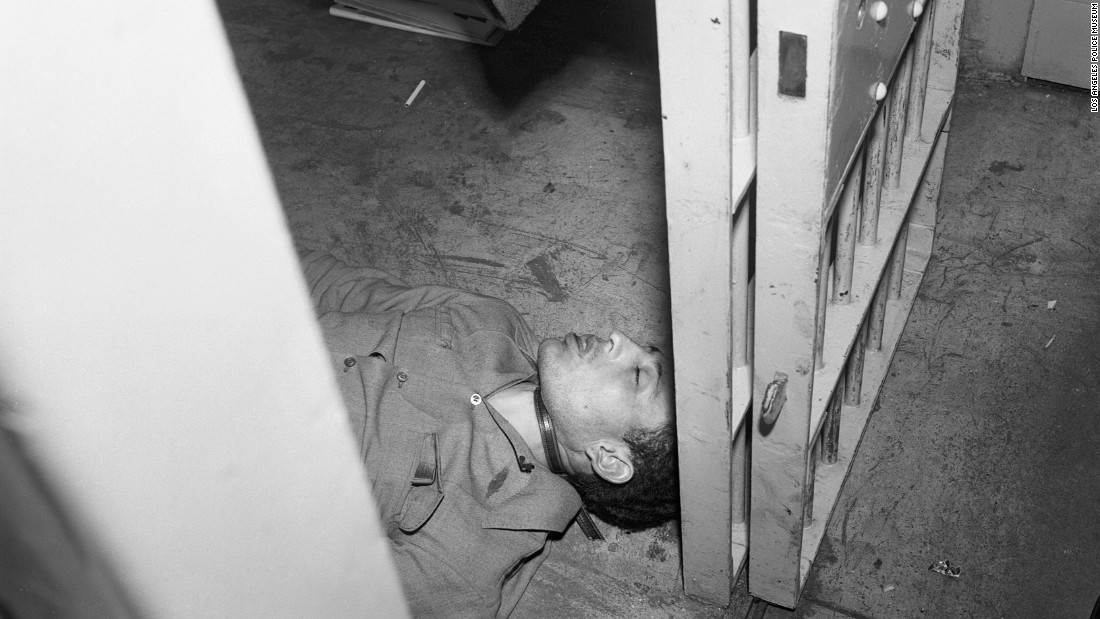Are we truly prepared for the unfiltered realities of the digital world, or are we unwittingly exposing ourselves to content that could be detrimental to our well-being? Navigating the internet today demands a critical understanding of the platforms that exist, especially those that trade in graphic content.
The online landscape is in constant flux, with evolving technologies shaping how we consume and interact with information. Within this dynamic environment, a specific category of websites, often referred to as "real gore websites," has emerged as a subject of intense debate. These platforms showcase graphic content, frequently depicting violence, accidents, and even death. The existence of such platforms brings to light a range of challenging questions concerning freedom of expression, ethical considerations, and legal boundaries. This article dives into this controversial subject matter, analyzing their nature, the risks associated with them, and the importance of responsible online conduct.
Here is a bio data, the following table will give you a glance.
- Aagmaal Pro The Ultimate Guide To Financial Tools Amp Productivity
- Splashland Alamosa Your Ultimate Guide To Fun
| Category | Details |
|---|---|
| Name of Website | Real Gore Websites |
| Nature | Online platforms that host graphic content, often depicting violence, accidents, or death. |
| Content Type | Explicit imagery (accidents, crime scenes, medical procedures, war footage), unfiltered access, community-driven. |
| Key Concerns | Mental health implications, legal and ethical concerns, desensitization. |
| Educational Value | Applications in medicine and advancements in safety |
| Regulation and Content Moderation | Legal frameworks, technological solutions (AI and machine learning) |
| User Responsibility and Digital Literacy | Parental guidance, community engagement. |
| Research and statistics | Studies on desensitization, empathy, and mental health impacts. |
| Future Trends | Technological innovations (blockchain), societal shifts |
| Reference | Wikipedia |
Real gore websites are characterized by their capacity to host explicit imagery that might depict events like accidents, crime scenes, or even medical procedures. They present this content without age restrictions or warnings, which adds to the complexity of their impact. Many of these platforms operate as community-driven spaces, allowing users to share and discuss graphic content. This also gives rise to potential legal implications, which often vary depending on the jurisdiction and the specific nature of the material. Understanding the nuances of these websites is important for both users and policymakers.
The genesis of real gore websites can be traced back to the initial phases of the internet's development. During the 1990s, a relatively unregulated online environment allowed users to freely share graphic content on platforms like forums and newsgroups. As technology advanced, these platforms transformed into devoted websites offering a diverse array of explicit material. The rise of social media and file-sharing services further expanded access to this type of content, making it easier for users to find and share graphic imagery. Platforms like the Internet Archive hosted mirrored versions of gore sites, illustrating how the desire to document and archive content influenced its availability, even if the original source had been removed.
The online world is evolving, and with it, the accessibility of content that challenges the norms of society. Real gore websites exemplify this, as they provide users with explicit materials that may not be suitable for everyone. This brings up critical questions about the role of online platforms in regulating content and making sure that users are safe. The impact of these platforms on society is a topic of debate.
The content found on real gore websites is diverse, accommodating different interests and motivations. Some users seek educational resources, while others may be drawn to sensational or disturbing imagery. It is essential to understand the types of content available on these platforms to assess their influence on society.
- Accident footage: Videos and images of car crashes, industrial accidents, and other incidents.
- Crime scenes: Photographs and videos from crime investigations, including homicide and suicide cases.
- Medical procedures: Footage of surgeries, autopsies, and other medical operations.
- War and conflict: Imagery from battlefields and conflict zones, often depicting violence and destruction.
Each category of content carries its own set of implications, influencing how users engage with the material. By examining these different categories, we can gain a better understanding of the motivations behind real gore websites and their potential impact on viewers.
However, it is vital to address the risks and dangers linked to real gore websites. These platforms can contribute to mental health challenges, promote desensitization, and potentially incite harmful behaviors. Understanding these risks is essential for fostering responsible online behavior and protecting vulnerable populations.
The act of viewing graphic content can have lasting effects on mental health, particularly for individuals with pre-existing conditions. Research indicates that exposure to violent or disturbing imagery can lead to anxiety, depression, and post-traumatic stress disorder (PTSD). Moreover, prolonged exposure to such content can desensitize individuals, diminishing their capacity for empathy.
Real gore websites often exist in legal gray areas, raising questions about the nature of online content regulation. In certain jurisdictions, the act of hosting or sharing specific types of graphic material may be considered illegal. Further, the ethical implications of using real-life tragedies for entertainment purposes cannot be overlooked. Policymakers and stakeholders must address these concerns to foster a safer digital environment.
Despite the risks associated with these platforms, real gore websites can serve a useful role for education and awareness. Medical professionals, for example, may utilize such platforms to study surgical techniques or autopsy procedures. Similarly, accident footage can help engineers and designers improve safety standards across various industries. By recognizing the potential benefits of real gore websites, we can harness their power for positive purposes while mitigating the associated risks.
Medical professionals frequently rely on real gore websites to access authentic footage of surgeries, autopsies, and other procedures. This material provides valuable insights into human anatomy and surgical techniques, enhancing the quality of medical education and training. These platforms also serve as resources for researchers studying rare conditions or complex medical cases.
Graphic content from real gore websites can inform safety improvements in fields such as transportation and construction. By analyzing accident footage, engineers can identify design flaws and develop solutions to prevent future incidents. Workplace safety protocols can be refined based on real-life examples of industrial accidents.
Regulating real gore websites presents significant challenges for policymakers and platform operators. Achieving a balance between freedom of expression and user safety requires careful consideration of legal, ethical, and technical aspects. Effective content moderation strategies can help mitigate the risks associated with these platforms while preserving their potential benefits.
Existing laws and regulations vary widely across jurisdictions, making it difficult to establish universal guidelines for real gore websites. Some countries impose strict restrictions on graphic content, while others adopt more lenient approaches. Policymakers must work together to develop coherent frameworks that address the unique challenges posed by these platforms.
Technological advancements in artificial intelligence and machine learning offer promising solutions for content moderation on real gore websites. These technologies can help identify and flag inappropriate material, reducing the burden on human moderators. Implementing such systems, however, requires significant investment and collaboration between stakeholders.
Ultimately, individual users bear the responsibility for navigating real gore websites. Promoting digital literacy and responsible online behavior is essential for minimizing the risks associated with these platforms. By educating users about the potential dangers of graphic content, we can empower them to make informed decisions about what they choose to consume.
Parents play a crucial role in protecting their children from harmful online content. By monitoring internet usage and discussing the dangers of real gore websites, parents can help their children develop healthy digital habits. Parental controls and filtering software can be valuable tools for restricting access to inappropriate material.
Encouraging open dialogue about real gore websites and their implications can foster greater awareness and understanding within communities. By sharing knowledge and experiences, individuals can work together to promote responsible online behavior and protect vulnerable populations.
Research into real gore websites and their societal impact provides valuable insights into their nature and effects. Studies have shown that exposure to graphic content can influence behavior, attitudes, and mental health. Examining these findings helps us understand the implications of real gore websites and develop strategies to address their challenges.
According to a study published in the Journal of Applied Psychology, prolonged exposure to violent imagery can lead to desensitization and reduced empathy. Similarly, research conducted by the National Institute of Mental Health highlights the link between graphic content and mental health issues such as anxiety and depression. These findings underscore the importance of responsible content consumption and regulation.
The future of real gore websites will likely be shaped by technological advancements, regulatory developments, and societal attitudes. As virtual reality and augmented reality technologies become more prevalent, the nature of graphic content may evolve, offering new opportunities and challenges for users and policymakers alike. Staying informed about these trends is essential for navigating the digital landscape responsibly.
Emerging technologies, such as blockchain and decentralized networks, may transform the way real gore websites operate, offering greater anonymity and security for users. These innovations also raise concerns about content regulation and accountability. Policymakers and stakeholders must address these issues to ensure a safe and responsible digital environment.
Changing societal attitudes toward graphic content may influence the popularity and acceptance of real gore websites. As awareness grows about the potential risks and benefits of such platforms, users may adopt more responsible approaches to content consumption. By fostering open dialogue and promoting digital literacy, we can shape the future of real gore websites in positive ways.
In conclusion, real gore websites represent a complex and controversial facet of the digital age. While they offer potential benefits for education and awareness, they also pose significant risks to individuals and society. By understanding their nature, risks, and implications, we can navigate the digital landscape responsibly and make informed decisions about what we choose to consume.
The conversation about real gore websites is far from over. The interplay between freedom of expression, ethics, and safety online needs ongoing attention. The digital landscape demands we continually refine our understanding and approach to content consumption. Responsible online behavior is essential to cultivate a safer environment for everyone. This conversation remains critical.
- Reverb Your Ultimate Guide To Buying Selling Music Gear
- Best Garage Sales In New Braunfels Your Ultimate Guide

